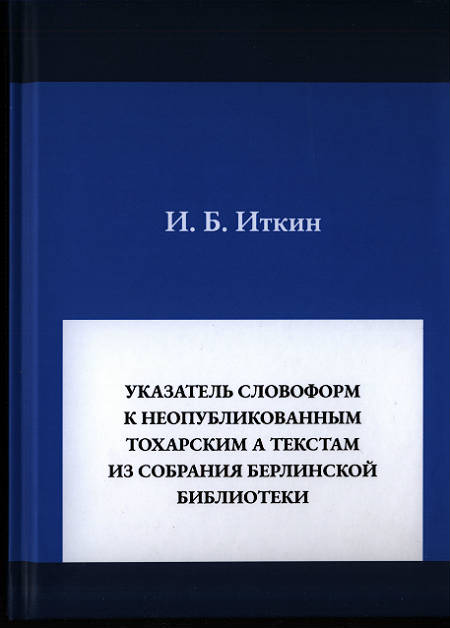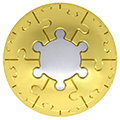 Указатель словоформ к неопубликованным тохарским А текстам из собрания Берлинской библиотеки
Указатель словоформ к неопубликованным тохарским А текстам из собрания Берлинской библиотеки

Иткин Илья Борисович
Ответственный редактор: Коган Антон Ильич
Москва, 2019, 240 стр.
Настоящее издание представляет собой указатель словоформ, встретившихся в неопубликованных текстовых фрагментах из собрания Берлинской библиотеки, написанных (целиком или частично) на тохарском А языке. Указатель впервые систематически вводит в научный оборот лексический материал нескольких тысяч небольших текстовых фрагментов, не вошедших в классическое издание тохарских А текстов 1921 г.
Указателю предшествует подробный методологический комментарий, касающийся устройства словарных статей, системы помет и других принципов подачи материала, позволяющих представить полученные данные в наиболее наглядном и эксплицитном виде.
Помимо указателя, книга включает в себя справочную таблицу, содержащую информацию о каждом из рассматриваемых текстовых фрагментов, в частности, о месте их находки, принадлежности к той или иной рукописи, наличии параллельных текстов. Для нескольких сотен фрагментов даются (в значительном большинстве случаев – впервые) сведения о том, с какими другими фрагментами они соединяются.
Книга предназначена для специалистов по тохарским и – шире – индоевропейским языкам, для всех, интересующихся историей центрально-азиатского буддизма, а также для исследователей, работающих с ограниченным и трудным для изучения корпусом древних текстов.
English version
The present publication is an index of the wordforms which occur in the unpublished text fragments from the Berlin State library collection, which are written (fully or partially) in Tocharian A. The index systematically introduces for the first time the lexical material of several thousands of short text fragments, which were not included in the classical edition of Tocharian A texts by E. Sieg and W. Siegling (1921). Many of these fragments have never before been regarded as written in Tocharian A or even as anyway interpretable.
The index is preceded by a detailed methodological commentary on the organization of dictionary entries and other principles of data representation, which allow for a most clear and explicit demonstration of the material. We introduce the notion of "letter" (of the Tocharian script), a part of an akṣara, which has a separate further indecomposable correspondence in transliteration. We prove the necessity of several different labels, which mark the earlier unknown Tocharian A lexemes and word forms, as well as the first-ever defined word meanings. Great attention is paid to the assessment of reliability of the decisions made in this work. Against the tradition prescribing the reproduction of the Sanskrit ś and ṣ in the same way (as "ш"), in personal names ś is always reproduced as "щ", as the corresponding sounds differ in Sanskrit, in the Tocharian languages, and in Russian. The index consequently fixes the mentions of all its word forms in the thesaurus of the Tocharian A language by P. Poucha (1955), the first volume of the Tocharian A dictionary by G. Carling (2009), and the index of the Tocharian verbal forms, which is included in the monography by M. Malzahn "The Tocharian verbal system" (2010); all divergences of readings and interpretations with any of these researchers are specially concerned.
The index is supplied by the following lists:
– list of the word forms which demonstrate some graphic, phonetic or morphonology effects, which are of special interest;
– list of the names of the tunes in the fragments given, which introduce the monologues in verse;
– list of "dark places" – the text segments which do not allow for an unambiguous word division and which lack for a least reliable interpretation;
– list of the supposed mistakes of the scribes;
– list of the cases when a line allows for specifying the reading and/or interpretation of some place of other Tocharian texts.
Besides the index, the book includes a reference table with the following data on each text fragment in question:
– place of discovery;
– content of the text (if definable);
– belonging to a certain manuscript;
– existence of parallel texts;
– the researcher(s) who obtained the data on a certain fragment.
A necessary prerequisite for creating such table was a systematic study of the handwritings of the fragments listed in it. For several hundreds of the fragments, mostly for the first time, we provide the information about which leaves they belong to and/or which other unpublished fragments they should be joined with.
The book is designed for the specialists in Tocharian and, wider, in Indo-European languages, for all interested in the history of the Buddhism of Central Asia, and for the researchers working with a limited and а difficult to study corpus of ancient texts.



